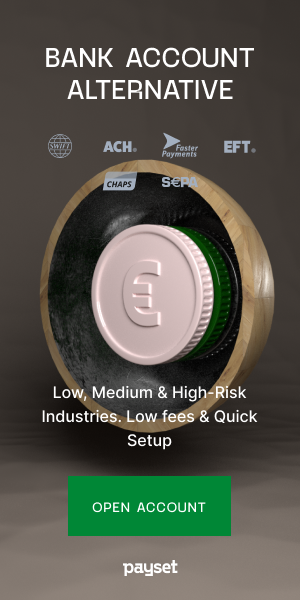
Crypto's Evolution: Caspian's CTO Gives an Inside Look at Institutional Investment
Feb 17, 2019, 1:17PM by Chris Madill
by Chris Madill
In today's article, we get an insider's look at the evolution of institutional trading of digital assets from Caspian's CTO Gerrit Van Wingerden.
“Institutional investment”. This alliterated phrase is one of the biggest buzzwords in the 2019 cryptosphere. While many armchair cryptonauts think the words “institutional investment” are synonymous with “lambos” and “mooning”, those who are deeply entrenched in the crypto-market know that “institutional investment” means so much more.
Unlike the wild west style of crypto-investment that helped give rise to the 2017 speculative bubble, institutional investment may not push prices back to all-time-highs, but it will help give the digital asset class a truly defining level of legitimacy.
The reason we haven’t seen institutional investors flood into the crypto-market yet is simple - the market just isn’t ready for them, at least, not yet. Sure, some bleeding-edge institutional investors have certainly entered the market via OTC trading, and many are reported to be queued up behind projects like Bakkt and Fidelity, but most institutional investors are still waiting on the market to mature.
What Does Market Maturity Mean?
Institutional investment requires large volume trades, and sophisticated tools to support a healthy trading ecosystem - Institutional investment is a real business, after all. Right now, there isn’t enough liquidity available through any singular exchange to meet institutional-level trading. Not every crypto-exchange is capable of providing the security services, custodial solutions or regulatory compliance needed to meet the requirements of most institutional investors. In short, the crypto-marketplace was never “built” to meet the needs of financial investment institutions. Instead, the market has grown creatively and organically from its humble beginnings as an alternative concept to fiat money. Now, if the digital asset class is to continue its march towards adoption, creative thinkers will need to work to adapt crypto’s existing infrastructure to support the next step in crypto’s evolution - Institutional investment.
Today, we are lucky enough to meet with one of those creative thinkers. Gerrit Van Wingerden is the CTO and co-founder of “Caspian”, a full-stack crypto-asset management platform that looks to bring institutional investors into the crypto-market. Gerrit is also the Managing Director of Tora Japan for TORA trading services, and he holds a Bachelor Degree in Computer Sciences from Stanford University. In our interview, Gerrit offers insights into the creative avenues his company Caspian is pursuing to help solve some of the biggest hurdles facing institutional investors in today’s digital asset market. Gerrit also provides us with an insider-look at the state of institutional investment in 2019, offers his thoughts on decentralized exchanges, and discusses how he sees the future of crypto-investment.
Could you describe what Caspian is, and why it is integral to institutional investors looking to enter the crypto market?
Caspian is a full-stack crypto asset management platform that ties the biggest crypto exchanges together into a single interface. The platform also offers compliance, algorithms, portfolio management, risk, and reporting. It is a joint venture between TORA, a leading provider of asset management technology and Kenetic, a leading blockchain and cryptocurrency hedge fund and investment firm. Both companies have a wealth of experience in asset management that has been accumulated over decades of building and operating trading platforms and technologies as well as managing portfolios of different asset classes including cryptocurrencies. Our development team is leveraging the capabilities and resources of two existing, successful financial businesses to build an ecosystem that enables professional traders and investors to operate more efficiently and improve their performance.
What is Caspian doing to bring institutional investors into crypto? What problems is the company addressing?
Traditional institutional investors face a whole host of issues when it comes to trading crypto that have, thus far, limited their participation.
For one, the fragmentation of crypto exchanges has made it very difficult for institutions to implement diverse investment strategies that require them to execute trades across many exchanges. The only way to do this has been to keep all their exchange accounts open and monitor them through different interfaces. Maintaining target allocations in this way, which institutional investors must do, is very difficult. Moreover, the crypto exchange fragmentation creates liquidity and slippage issues, as even small trades can cause prices to move.
Then there is the issue of risk management, which is a crucial element of trading in any asset class. Crypto-exchanges are vulnerable to hackers and the ones that exist today lack many of the security features offered by trading platforms in traditional markets. These include experienced customer support and risk management capabilities.
Finally, but equally important, are audit and compliance needs. While institutions must monitor and retain meticulous details on their traders’ positions, triggers and pre-trade limits, the features of crypto-exchanges and the need to work across multiple exchanges creates a challenging situation. As a result, many funds are trading and monitoring crypto-investments through spreadsheets.
Caspian is helping institutional investors with all these challenges with a solution that provides professional-grade trade order, execution, compliance and risk management features to meet their regulatory and operational needs.
In an interview hosted on Caspian's website, you talk about the need for institutional investors to deal with multiple exchanges:
Well, I saw how difficult it was to connect to a lot of exchanges and also how important it was for institutions to be able to trade across multiple exchanges and realized there was a big opportunity to build a product like Caspian — an institutional grade system that, among other things, connects to multiple exchanges.
Can you elaborate on why crypto exchange API's are a challenge, and how Caspian is bridging this gap for its clients?
The challenge with crypto exchange APIs is that they are all different, there is no standard. Further, some exchanges offer batch APIs that are particularly difficult to write to. Working with Caspian removes these challenges completely as we’ve already done the work necessary to make connecting to all the major exchanges seamless.
In this same interview, you say you are “very excited about the prospects for decentralized exchanges.” Can you tell us why decentralized exchanges are of interest to Caspian and its clients?
While still far off from achieving the liquidity, scalability and functionality needed for mass adoption, decentralized exchanges are of interest to Caspian and our clients because of their potential to deliver several benefits. The most obvious benefit of a DEX is the same as with any decentralized application – removing the middleman and making all interactions peer-to-peer. By being decentralized, there is no central authority that can impose regulations, ban certain currencies or even the ban the exchange itself. For example, China and India have already banned cryptocurrency exchanges while many other countries have already put restrictions on cryptocurrency trading.
Another benefit of a decentralized exchange is heightened security. In a decentralized exchange, each participant is in private control of their own funds, so there is no central point of attack. Massive security attacks like the $470 million that was stolen from Mt. Gox were made possible because the centralized hot wallets of the exchange were targeted as a single point of vulnerability, or failure.
And finally, should decentralized exchanges reach a critical mass, they could provide more efficient and cheaper transactions than a centralized exchange since there is no third-party authenticator.
Is Caspian helping to develop the decentralized exchange ecosystem?
We are currently exploring several avenues of how Caspian can help to develop the decentralized exchange ecosystem.
There seems to be a long-standing “buzz” surrounding institutional investment in the digital asset class, but we are yet to see a lot of big money moving into crypto. Is Caspian seeing more institutional investors moving into the space? Can you quantify this for our readers?
The digital asset space has seen explosive growth over the past year, with average daily exchange-trading volume across all crypto assets surpassing 18 billion USD equivalent and total estimated market cap for blockchain instruments exceeding 325 billion USD equivalent as of April 2018. According to Crypto Fund Research, as of January 2019, there are now a total of 741 crypto funds worldwide with 239 new funds being launched in 2018 alone.
Why would institutional investors want to move into crypto now?
Institutional investors should want to move into crypto now for a few reasons. For one, professional- grade trading platforms like Caspian’s can provide the full suite of capabilities that are needed in the institutional market including exchange connectivity, trade execution, compliance, position and risk management, and reporting. We are also continuing to see greater interest from mature custodial solutions wanting to enter the crypto market. The daily rumination about the likely acceptance of Bitcoin ETFs and the extreme volatility of the crypto markets are also making the market attractive for traditional and HFT firms alike.
What impacts do regulations have on the institutional investment growth within the crypto space, if any?
One of the biggest issues preventing further growth of institutional investment in the crypto space is the lack of proper, secure infrastructure. As examples, only a handful of custodians meet the security standards imposed by regulators, and as recently as October, only 68% of crypto exchanges operating in the U.S. and Europe were fully KYC compliant, according to research done by P.A.I.D. Strategies. The regulators are moving to address issues like these however and as more transparency, legitimacy and safeguards come into the asset class the more institutional money will follow.
Are you concerned with the regulatory pressures being placed on crypto exchanges/trading globally?
In general, we are supportive of the regulations being placed on crypto exchanges because we believe, as we’ve stated earlier, that as more transparency, legitimacy and safeguards come into the asset class the more institutional money will follow. What’s most challenging today, however, is the wide range of regulations that are being placed on crypto exchanges. Regulations vary widely from country to country and in the U.S. state-by-state. This is one of the reasons why institutions need a trading and investment platform with flexible compliance tools so they can keep up.
Where do you hope to see institutional investment participation by the end of 2019?
We expect institutional participation on the exchanges and over-the-counter (OTC) to be up by the end of 2019 as the market further matures both in terms of regulations and the availability of institutional-grade investment platforms such as ours that offer the trading, compliance and reporting capabilities. According to CoinCheckup, as of January 2019, daily exchange traded volumes across crypto assets already exceeded $16 billion. Over the next 15 years, RBC Capital Markets predicts that this volume will grow to $10 trillion. As we continue to modify our platform for institutional investors and this becomes more mainstream, we expect that the number of institutional participants will surge this year.
What effect would this participation have on the overall market?
This influx of institutional investors into the crypto markets could manifest itself in several ways. Unlike individuals, financial institutions are restricted in their ability to manipulate markets on a large scale, so their presence may contribute to more stable prices. The inflow of capital and liquidity will also help usher along the development and adoption of new regulatory frameworks, bringing more transparency and legitimacy into the market. And finally, we may see more high frequency trading or HFT. Right now, its unclear how much HFT is taking place in crypto but, with sophisticated algorithmic traders already providing a lot of the liquidity for some of the less well-known coins, it’s reasonable to assume it will increase. Plus, the latest offerings from major exchanges suggest that they are aimed at servicing HFT needs.
As the CTO and co-founder of Caspian, what are your personal goals for the project?
Over the past several years we’ve seen Bitcoin, as an example, transition from a relatively niche asset traded by programmers and hobbyists into a fixture on the financial playing field. Personally, I see this trend continuing, and my goal is to help ensure that in a few years-time crypto currencies are as commonly traded by the large financial institutions as equities.
Conclusion
Gerrit’s thoughtful insights allow us to peer into the world of institutional investment from a unique perspective. From his analysis, we see that institutional investors are inching closer to crypto every day, a hint of the potential that crypto holds as an asset class. If Caspian is successful in bringing more institutions into the crypto market, institution-level investment could usher in more stable prices, giving rise to a more legitimate market, and offering a wider acceptance of cryptocurrency technology from both regulators and financial institutions. Cryptocurrency is now at a crossroads, and if industry-leaders such as Gerrit can give large financial institutions a reason to take crypto seriously, the technology could take a crucial step toward its ultimate purpose: Adoption.
Disclaimer: information contained herein is provided without considering your personal circumstances, therefore should not be construed as financial advice, investment recommendation or an offer of, or solicitation for, any transactions in cryptocurrencies.

















